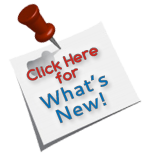March 1, 2020
Recently, while doing a two-handed recording, it dropped in that there is a movement that’s made in the two-handed recording which is the same movement we practice in the Reflective Listening Buddies (RLB) program.
It’s a necessary movement that must be made in a two-handed recording. Here’s what I saw: I can show up on my RLB call identified, or just distracted and unable to focus (which is also identified with ego). And, in order to listen to and reflect my buddy in their own words, I have to disidentify.
For me, it’s not possible to stay identified and "in my story" and be able to listen and reflect my buddy; those two things, for me, are mutually exclusive.
The process of disidentification happens when all of attention turns to what my buddy is saying and away from the conversation in the head. It's one of the many things I appreciate about the RLB program; the structure of the program and the simple movement of attention turning away from conditioned mind and turning to focus on listening to my buddy bring me to an experience of presence.
And it's that very movement that we have to practice when we are listening to the speaker in a two-handed recording; we have to drop the story of what was just recorded and disidentify, as if we are going to listen and reflect.
If I am identified during the listening part of the two-handed recording, and listen from a place of identification to the one who just expressed uncensored, there's no real listening happening, no real presence there able to receive and listen and respond to that suffering person.
In other words, attention is not on the listening; attention is still listening to a conversation in the head or the story.
That's why we say in a two-handed recording “listen as if you are listening to someone you deeply care about.” We could also say "listen as if you are going to reflect this person, in their own words, like we do with our RLB buddy."
When we listen in this way, disidentification happens, and there is a movement into presence and into the place of wisdom, love, and compassion. It is the movement of attention, turning away from the conversation in the head and towards listening that makes it possible for the mentor to mentor, for us to be able to hear the mentor.
The same exact process could be said for listening to the words of wisdom, love, and compassion (the Mentor) as the last step. If the words of the Mentor aren't sinking in or being received, then it's likely that there isn't anyone really listening. Really listening and ‘being with’ require disidentification. Really listening requires presence. And, for me, really listening to, being present to, and receiving the message of that compassionate presence (the Mentor) is often all that's needed. And with that, the mentor might simply nod her head and respond with a very loving and all inclusive, “yes,” or “I hear you, I’m here with you, I love you.”
The RLB program is such a wonderful place to practice the movement to presence over and over and over again. We can show up for ourselves and for hearing/receiving the words of the mentor in two-handed recording by listening as if we are going to reflect. And, if we are up in our heads and in an ego story, it becomes very obvious, just like it does on a reflective listening buddies call. Makes a good case for participating in the RLB program.
Gasshō
-
When listening to a two-handed recording, listen as if you are going to reflect, as if you are going to be a mirror for the person you are listening to. Practice reflective listening when listening to the person who just expressed themselves fully and also when listening to the words of the mentor. If it feels like you could use some help with reflective listening skills, with that movement to presence, the Reflective Listening Buddies program is a great place to practice keeping attention focused on listening, the movement to presence, and right on into conscious compassionate awareness.
![]() Do you have a favorite R/L insight, idea, or practice tool? We’d love to hear it! Send us your favorite quick tip (75 words or less) or submit your idea for a blog post.
Do you have a favorite R/L insight, idea, or practice tool? We’d love to hear it! Send us your favorite quick tip (75 words or less) or submit your idea for a blog post.

